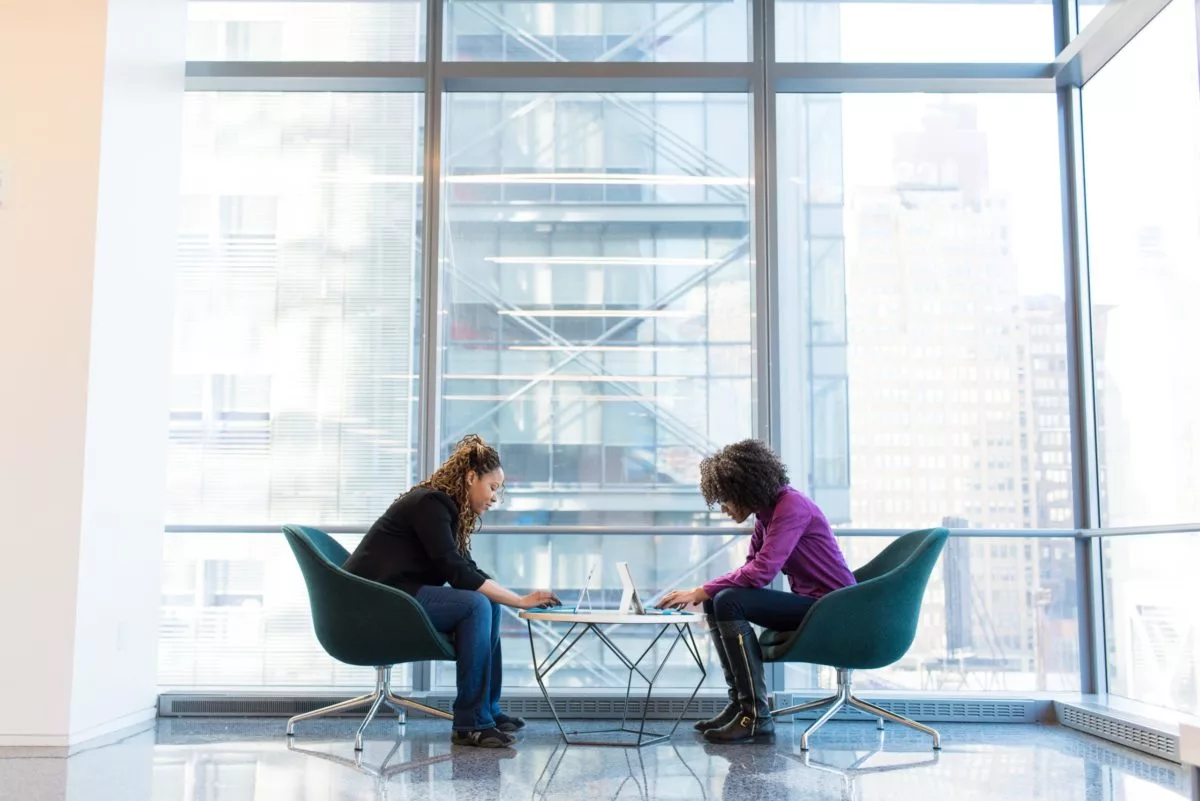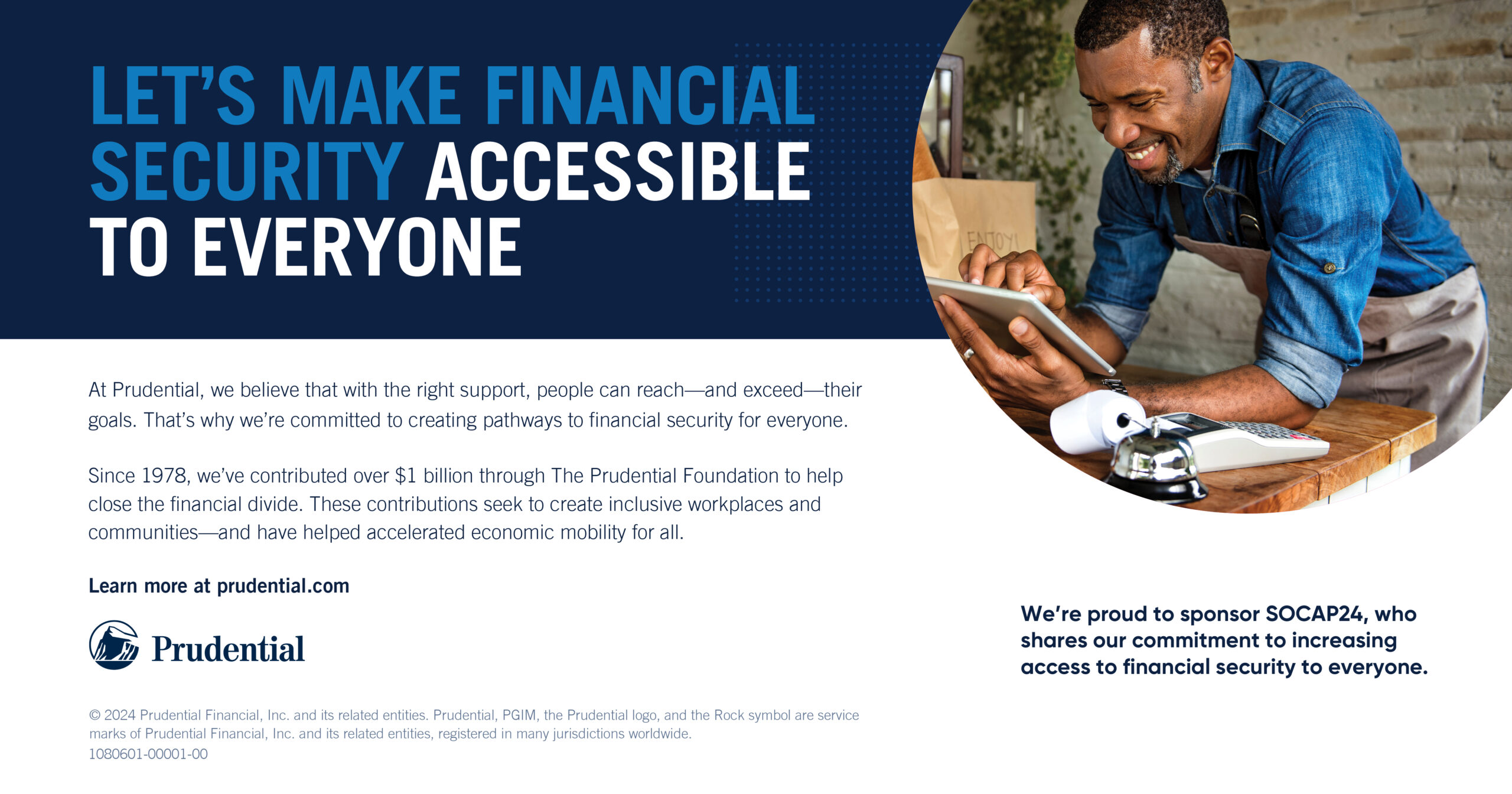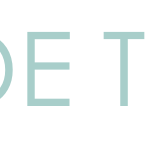A Global Review of Gender-Lens Investing in Light of the Impacts of the COVID-19 Pandemic
The UN SDG No. 5 targets gender equality, and while that does make investing in female entrepreneurs or gender-lens investing a social justice priority, it is in truth good business to embrace diversity and invest in women-led businesses. Despite several studies showing how advancing women’s equality can unleash unprecedented global growth, gender balance and gender lens are still not widely implemented as a practice, even among impact investors.
In this panel from SOCAP Virtual in 2020, a diverse set of panelists deeply engaged in this topic came together to address this issue from around the globe:
Julia Profeta Johansson: Co-Founder of ConsciousGrowth / Remagine / Ella Impact
Aarti Wig: CEO and Co-Founder of Yunus Social Business India
Kimberly Jire: Founder of Global Women Leaders Strategic Philanthropy
Andia Chakava: Investment Director of Graca Machel Trust
You can watch the full session or read an edited transcript below to learn practical approaches to increasing female representation among investors, how to include more female entrepreneurs in investment portfolios, and how to develop impact solutions that work for everyone, regardless of gender.
Watch Investing in Female Entrepreneurs: A Social Issue or an Economic Opportunity
Julia: To start with, I would like to ask you three, why is it actually a good business to invest in women? Aarti, maybe you want to start with that.
Aarti: The definition of gender-lens investing today, it encompasses various perspectives. One is investing in women-led businesses. The second is investing with the lens, including women in value chains. Then the third is including women in investing decisions as well. I think Grameen Bank is one of the earliest examples of gender-lens investing that really encompasses all three perspectives. It’s also a beautiful example of the business case for investing in women.
Grameen Bank, it was set up, first of all, as a female-focused lending business that invests primarily in women-led businesses and also where the decision-making is in the hands of the female borrowers. The story of Grameen Bank really continues to focus rightly on its poverty alleviating impact, the fact that it’s about nine million borrowers out of abject poverty. It’s been replicated around the world and impacted about a hundred million people globally through those replications. But what isn’t talked about so much is how successful Grameen Bank is as a business on traditional business parameters.
It’s the scale of how many customers it serves. It serves nine million customers in Bangladesh. It’s disbursed $24 billion to the world’s poorest women, and it has a 98% repayment rate, which is higher than that of the less risky banking sector in a sense. The business case that it demonstrates is twofold, one, that by investing in women, you create economic value, which is evidenced by the number of people that it’s brought out of poverty.
Second, that investing in women as a business is also good business. This is not just a developing country experience. There’s Grameen America as well, which provides micro loans to women below the federal poverty line. It’s had incredible impact in the 12 years that it’s been operating. It’s disbursed almost one and a half billion dollars in loans, still about 125,000 women in 15 cities across the US. These women in turn have gone on to create about 150,000 jobs. They’ve achieved higher family incomes. They’ve revitalized the communities. Again, social impact apart or economic impact apart, Grameen America is also success parameters. These women have also repaid their loans with, again, a 99% repayment rate. I think this demonstrates that there is a very strong business case for the social opportunity, which is investing in women.
If you come to the untapped opportunity and you take the example of India, McKinsey research suggests that India could add over $770 billion to its GDP by ensuring equal opportunities for women. India currently has one of the lowest female participation rates in the workforce. After we add one million young people in the workforce every year, and only 13% of those are women. In fact, their participation has declined sharply over the last 10 years. Even at the top of the pyramid, we have a mere 14% of women in leadership positions, and only 12% of the funded startups in India have a female co-founder.
Julia: Andia, I think you can bring also a very interesting perspective from Africa and what’s actually your take on this all. Why is it good to invest in women?
Andia: Gender-lens investing really can play a significant role in addressing the challenges women have as consumers, employees, entrepreneurs. This is mainly about a lack of access to finance, social biases, inequality in opportunities. We’ve seen more than 4.6 billion in debt and capital being deployed as a gender lens across the world in the last five years. But a lot of the activity has remained confined to North America with only 6% of it being deployed in Africa.
It must also be noted that Africa’s the only continent where female entrepreneurs, when you look at the MasterCard Index of Women Entrepreneurs, the only continent where women have chosen to be entrepreneurs more than their male counterparts, and having countries like Ghana and Uganda cap other more developed countries. So despite the harsher social economic conditions, women are still prevailing and are choosing entrepreneurship.
Most entrepreneurs in Africa really cite the lack of access to finance and access to markets as key impediments to the growth. The lack of finance probably accounts for twice the proportion of business failure amongst women compared with men. A lot of that has got to do with the smaller asset ownership that really leads to women’s struggle to get loans of the same size as men. These are things that really feel the capital investment gap. We’ve also seen that as much as women are running businesses, most of their businesses are an average smaller and less productive than male-owned businesses. Although, there is the case that there was a difference between doing B2B or B2C businesses in terms of the type of businesses women entrepreneurs are in, we found that women entrepreneurs also lack mentors because they aren’t able to see people that are like them to succeed in this field.
When we did our research, we found about 63% are women entrepreneurs not having access to a business or industry mentor, and more male entrepreneurs really knowing a man who has started and run a business successfully than women do. This is despite the fact that evidence really looks at really the opportunity and the product customization of the female segment, really looking at women as consumers, not only controlling consumer spending, but really serving an underserved market because they understand the needs.
When we do our investing, we’re finding really interesting women entrepreneurs. I think half of our pool, at least 50% of the women entrepreneurs, have products and services that cater to the underserved female segment. We’re talking about issues to do with maternity, biodegradable sanitary towels, baby products, advice to moms, wholesale online shopping, early childhood education, skincare products, hair care, all of these really thoughtful solutions that wouldn’t necessarily come up if you’re dealing with a male entrepreneur. So there are problems that need to be solved in this world and can be solved in this world if we’re dealing with women entrepreneurs.
Julia: Hearing that potential, like in Africa, you see sometimes that some businesses might be less efficient because of lack of resources and benchmarks, etc. There’s some data that indicates venture-backed companies in the US and Europe, in general, they have like 35% return over investments when compared to men, or even like 12% above revenues as well. So I think it’s an important piece to really highlight, that women can be really more efficient if they’re given the same kind of conditions that men have. Kimberly, I think you have like a slight different approach and angle to this topic. I would like to hear your thoughts on that as well.
Kimberly: Yes. My background is actually in structured finance and banking. In that, I would describe that role as really a pipeline creator of creating new structures, creating deals, creating access to finance, creating access to markets. When I listened to Aarti and Andia, I’m completely convinced, as we all are, that it’s good business. It makes good sense. There are great businesses out there. So why aren’t we doing more of this?
I hear this over and over again. The access to finance isn’t because finance isn’t out there. It’s because we often leave women on their own to try to navigate this space while they’re trying to run their business. We need to make it easier for them to access finance, to access mentors, to access markets. One of the things that people overlook is you need to invest in actually the pipeline builders, or the glue, or the connective tissue that brings this together. In a commercial banking background, we always had enough resources slack in my team to be working on new deals, coming up with new structures, and the slack in the banking system paid for that. Now, who pays for the pipeline builders in this system? There is a gap here for women, actually, to take the initiative as female philanthropists, as female investors in pipeline creators to help bring these products and these women to a point where they are investible. We can’t leave them on their own. As women, it’s our responsibility, I think, to step in and create structures that do that.
I would give the example of the Center For Global Equality at Cambridge, which is run by Dr. Laura Allen. A woman investing in Dr. Laura and her team, it’s a drop in the bucket, actually. The leverage effect of investing in groups like that, who incubate, cultivate these ventures, female founders doing amazing social work, ground-breaking vaccine carrier technology that will transform childhood pneumonia, let alone COVID, vaccine delivery. But we’re not investing in those pipeline builders, those networks that are going to see these women actually supported so that we can invest in them. So we need to create the pipeline and the product so that we can help them.
Julia: That’s a great point, Kimberly, because I think that many times when we’re talking about investments, people tend to think about a certain stage of development of a company. And here it’s so important that we understand that there are different stages of development, and we need different sources of capital for each one of these. Having said that, I think is a good segue into our second main question of this conversation, which is, what are the current perspectives of the different kind of investor profiles on gender lens? So covering these different stages. Maybe we’ll invert here the order now and talk about the beginning of the pipeline creation with Kimberly. What’s your take on that?
Kimberly: It’s just a continuation of what I was just saying, so that the global and the leaders community that I convene comes from my own personal journey of trying to take what I learned in banking and finance, the global connections that I built, and somehow give back in initially the philanthropic space. As my own personal journey has evolved, that’s turned into impact investing, rising women entrepreneurship.
I realized that the power of convening other women like me around the world to think about how they can help. We’ve had pro bono legal work for decades. Well, what else can we donate? A bit of our time. For me, I do this full-time, for others, a bit of your time, to contribute as many do as a mentor. But beyond that, we work on financing structures. We work on different ways to think about new pipelines and pathways to get capital to female entrepreneurs and work with other institutions and draw them together as that connective tissue again.
Women are pretty good at seeing the possibility of how to bring people together and build community. I think that’s a real opportunity here and a catalytic role that female philanthropists and investors in pipelines can actually kickstart, so that we can be able to fast-forward and at greater scale than we’ve been able to do today.
Julia: Andia, what’s your perspective on the gender lens across like fund managers, family offices, banks?
Andia: Yeah. If I touch on banks, basically in emerging economies, women are about one-fifth less likely than men to have an account with a financial institution. Globally, they represent 56% of the financially excluded. I do want to say, before I jump into banks, that there has been a lot of female participation when it comes to the digital loans. But that in itself, when we talk about digital lending, has its own limitations because the credit offered is really expensive if you try and extend it beyond a month. It really works well for daily traders.
When we look at just women in banking, it’s really funny because women are celebrated to be very good savers. But when it actually comes to the share of the aggregate credit portfolios considered, you’ll find that they make up only 18% of these credit portfolios. When we talk about the loan approval rates, they’re 20% lower than men. Loan sizes are 58% smaller. So there is an issue with the banking industry. Now, this is something that the banking industry has realized or is beginning to realize. We have started tackling it by really engaging in the composition of the women within that industry itself. When we did our inaugural study, we had five of the top 10 institutions come from the financial sector. We’re seeing that some of these decision-making and having women in those strong, should I stay, line roles, not the staff roles, have really promoted the banks being more conscious and more deliberate about bringing women entrepreneurs into that fold.
When we look at the fund managers industry, I think this is an industry that really needs quite a lot of work, but it’s coming up with a lot of innovative things because the few women that are there are speaking out. We’re looking at only 8% of women that are senior investment professionals. Why do we care about this? Because these are the capital allocation decisions. This is where some of the biases lie. So it’s really important in terms of how these teams are constructed. In a study that ICIE did, nearly 70% of senior investment teams are all male. It’s been proved time and time again, that there is unconscious bias. This is bias that we have been raised in. So there’s a certain perception in how we feel or view a woman with children vis-a-vis a man with children.
We’re really advocating for very pure and specific gender-lens funds. We have found that when women are actually brought together and it’s very deliberate, that you are searching for returns at a pre-investment level all across investment process to the end, women come. The deal sourcing is a little bit different when you’re getting… The way you would actually review the portfolio. You still get the returns. It’s not about the returns. I think evidence has shown that gender-balanced teams produce higher returns. The issue is getting more women invested and also encouraging the follow on investments.
Julia: How much would you say that both within the philanthropic world and within fund management and banks, do people actually stipulate like KPIs? So really metrics to follow whether really the gender approach has been improving, increasing, and respected throughout everything that they have been doing. Do you see these KPIs actually be implemented or is it more like a pink washing?
Kimberly: There are disruptive models where people are taking great things from the philanthropic world and applying them to this funding of female entrepreneurs. SheEO is a great example of a hybrid model where it’s not philanthropy, it’s a straight loan, a revolving grant where women pool their catalytic capital together. They choose female ed ventures to support. They also support them through networks, community, etc.
It’s a fabulous model, very scalable. It appeals to women who like to participate and learn about what they’re investing in or learn what they’re giving in. And it’s a great hybrid model. There’s disruption going on in terms of you don’t need to rely directly on the banks to intermediate between women helping women or anyone helping women in this case get started. There’s great things in the world of connectivity, that we can do to actually move capital more directly to women and support them along the way.
Julia: Is it only about the gender lens into what it is that we’re investing or is this also a way of thinking how we do business, how we do investments?
Aarti: I’d like to bring in an additional perspective from the ones that Andia and Kimberly brought in, by co-opting the whole re-imagining capitalism discussion into the idea of, say, the topic that we’re discussing today, by expanding the scope of gender lens investing into what I’m going to call right now, feminine investing. Now, what does that mean? I’d argue that the kind of rapacious capitalism we’re seeing today, the climate exploitation, the inequality that we’re seeing today, the exploitation, the political aggression, even if I desire to go and colonize the moon or colonize Mars, all of this that we’re seeing in the world today is a result of too much masculinity. Too much masculine thinking. Let me put it that way. Aggression, linear thinking, focus on growth for the sake of growth alone.
One could argue that we’ve lost touch as a global society with the principles of the feminine. What does that mean? It means the principles of rootedness, of circular thinking, of sustainability, of community, and inclusion. To bring the world into balance, so really to stop the world from self detonating, we need to reconnect in a sense with the feminine. Masculine and feminine principles are independent of gender because the feminine does not sit in a female body alone. Neither does a masculine sit in a male body alone. So while, yes, it’s important to invest in women, invest for women, and invest by women, we can’t continue to invest in women who are doing old things in the old ways. We need to carve out space to invest in men and women who are thinking about doing business differently. And so, this is where I’m co-opting these recent calls that we’re seeing to reimagine capitalism.
I’d particularly like to talk about this from the perspective of bringing purpose into large companies and the rise of ESG investing, really, or purpose investing as evidence of the feminine making its way back into capitalism. If you were to put some numbers behind this, the Global Impact Investing Market is about $750 billion. Of this, about $5 billion is gender lens investing. We should carve out more of this by inter-gender investing and increase the size of the impact investing in general.
But another way of creating meaningful impact is to look at the trillions of dollars that are currently invested in traditional financial markets in large companies, and co-opt that money into feminine investing in one swoop by changing the color of this money, by changing the way that this money thinks about its purpose. So really feminine capitalism, in a sense. In addition to the moral argument, going back to the first question we were discussing, is there a business case? I would say that in addition to the moral argument for feminine capitalism, there is also a business case for feminine capitalism. Here, I want to reference some research that we did last year together with Porticus, INSEAD, and the Schwab Foundation, where we found that companies that engage and encourage purpose-led business projects, they did better on core business parameters as well.
Traditional business parameters, they had better employee engagement. They had improved customer perception leading to a top and bottom line impact. They had improved brand perception. They had more innovation. The employees had more entrepreneurial skills.
Julia: There’s now data supporting that, with COVID impacts, we’re going backwards when it comes to gender lens. I think it was one or two weeks ago that PitchBook released the data saying that venture-backed women actually reach their bottom compared to the last three years. So it’s the least investment into women-led businesses since three years ago, and mainly because companies’ portfolio of managers in general just like putting money exactly where money was before, just supporting existing portfolios, not looking at new opportunities, looking at the new innovations. What is the impact that COVID has had in fundraising for women-led businesses across the globe?
Andia: COVID has really taken us back. I mean, we were making a lot of progress. This was actually the year of the women. When we’re looking at Beijing+25, we were expecting some of the biggest commitments to come through to women. Now governments are reprioritizing budgets. What we have here is that it’s become a really difficult scenario when it comes to fundraising. I think from the industry, as you said, right, you said, Julia, it’s a wait and see, and it’s let’s protect our portfolio. Let’s protect the value that we already have.
When people are looking at new investments, it’s going to be in what they consider the sexy fields. They want to see what’s happening on the tech side. They want to see what’s happening on the energy side. So if you’re the traditional mom-and-pop shop that is feeding and really important from a neighborhood community point of view, it’s not really seen as an investor priority. What we’re saying is when we have extra ordinary circumstances, we cannot really look and view investments in the same way.
I’m really happy that institutions like MasterCard and Opus are really doing what we call COVID rebuild loans. They’re really looking at, how do we stabilize the businesses before, how do we keep the lights on? Then from those businesses, we can pick and see which businesses do we actually want to support with venture investments?
Kimberly: The flip side of the coin is that in terms of collaborating, accelerating access to networks, thinking of new ways of working together, there are more people probably watching this SOCAP session from different parts of the world than we would have in person. So, as women, we are balancing these different priorities as are men. I don’t want to exclude men, actually, from this conversation. There are some fabulous men in our network that it’s not exclusive to women, actually. So we need to find new ways of doing this.
It has diverted capital, for sure, at least in the short term. I mean, COVID is a priority for a lot of catalytic philanthropists, for a lot of investors, for valid reasons. But we need to make sure, again, that what structures are we building underneath? What future do we imagine for ourselves? What new models of capital going more directly can we use stitch up during this time? So let’s not waste this opportunity, as I think one of the other speakers said. There is an old model that was built a certain way, VC model, going and pitching, all this sort of thing. Let’s build some pools of capital that can carry women through this, and that can come from women. I mean, you’re getting zero interest in the bank, at least in my country at the moment.
So putting some money in the hands of a woman-led business to get them through, and if at the worst, it turns out a donation, at the best, you’ve really helped someone. Let’s think about new ways of doing this.
Julia: I think, Aarti, you have some also interesting insights, because you guys were coordinating a COVID alliance. What are like some of the specific components that you can share with us?
Aarti: COVID has impacted women disproportionately in India, first from an employment perspective. 80% of women workers in India are employed in the informal sector. We’ve seen these images of migrant workers. It’s been a very hot topic in India. We’ve seen horrible images of, because of the lockdown, migrant workers from cities traveling back to their villages on foot.
There’s very little data on this entire large proportion of the workforce that we have in India. And 80% of, like I said, the women in India are employed in this workforce. So the current crisis has very severely impacted their ability to continue working, to earn any income. Obviously, it’s then impacted even more those who are particularly vulnerable, so just single, differently abled women, or those that come from marginalized sections of society.
Government support has not been enough, and some of it has been in the form of guaranteed work. But then, again, that is also manual labor, like, for example, digging wells or building of roads, which is unsuited, in some ways, for women. School has been disrupted. This has disproportionately, again, impacted women. We already have a very high dropout rate in India. 40% of adolescent girls between the age of 15 to 18 drop out of school. This is pre=COVID. This is going to soar as families prioritize education of boys.
Access to health care has been disrupted. So there is a need to lean into investing into women or into structures that enable women. Yes, we have come together with a bunch of impact investors and the World Economic Forum to launch an alliance to raise money for social businesses. Of course, it has been challenging, but we have managed to create emergency funding for a lot of the social businesses.
This session was supported by the BMW Foundation, through the Responsible Leaders Network, to which all of the panelists belong; the Gender Alliance, a the network of gender activists from the Responsible Leaders Network and other networks that are really looking for the topic of gender in different sectors and dimensions; and also Ella Impact, which is a global premier network focused on impact investing.









